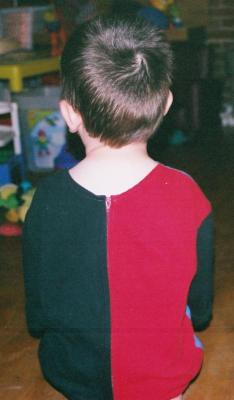It's quite incredible how tightly relationships can remain no matter how vast distances become. For this post, I'm going to take a short break from A Brief History of Time and move into a little bit of engineering. The science channel has a series entitled Through the Wormhole that is hosted by Morgan Freeman. I think this show is absolutely wonderful in that it merges science with celebrity to bring knowledge to the public. The information given on the show is clear and concise and definitely inspires me to continue pursuing engineering.
I've been watching the episodes online, and the most recent episode I watched was called "What Are We Made Of?" This episode dives into the world beyond atoms, protons, neutrons, and electrons.
One of the most amazing machines built by man today is the Large Hadron Collider located in Geneva, Switzerland. It is probably the crowning achievement of engineering in this century and definitely a huge inspiration for me. I also love the fears that it conjures: SCIENTISTS SEEK TO DESTROY THE WORLD BY RECREATING THE BIG BANG | ANTIMATTER WILL ANNIHILATE EARTH | DAN BROWN NOT FAR FROM THE TRUTH
I love it.
So let's first describe this machine and what it does. Again, this is pretty basic info that many people already know. But, many don't exactly spend time reading Science journal everyday or combing through science blogs, so it's still worth discussing.
The big question is: what are we made of? What is everything around us made of? Long ago, this answer was simple: Earth, Fire, Air, and Water. Although some still believe this, ideas have drastically changed since then. Even not too too long ago, we were all taught that everything is made of atoms. Even in middle school we were taught this. But within the last few decades, scientists have looked INSIDE the atom and found that things weren't as simple as they seemed. "Despite all of our knowledge, we still don't understand the true nature of matter."
So how do we look for the components of matter? Everything that we observe is built up and packed together, something like a car, for example. Sure, we can use microscopes, but the truth is that microscopes simply don't pack enough energy for us to peer way down into the heart of matter. Just like a put-together car, it's difficult to see the nuts and bolts inside with so many bigger components surrounding it. But what happens when we slam two cars together? Let them race toward each other at high speeds, driver-less of course, and let them crash into each other. Well, the parts and components of those cars come flying out as debris, and what was once inaccessible and hidden inside are now revealed, flying in every direction.
This is exactly what the Large Hadron Collider (LHC) does. We know that atoms are made of a nucleus containing protons and neutrons surrounded by electrons. But what are these components made of? Further, how is it possible that they even stick together? What's keeping these parts together and why isn't every piece of us flying apart into space?
The LHC is a 27km circumference tunnel buried underground run by CERN, the European Organization for Nuclear Research. We have one here in the United States at Fermilab, but it's only a mere 6.5km long. What's the difference? Well, this answer is common sense. What happens when you accelerate your car having only, say, 50 meters to work with? You ain't getting much acceleration, are you? Thus, the speed at impact won't break the car apart as much as we would like. Pieces will probably stay together and we won't get to see everything inside. However, give a car maybe 250 meters and it'll be going significantly faster. The faster the cars are going, the more debris comes out at impact and the more individual parts we can see. It's pretty simple.
http://deadwildroses.wordpress.com/tag/lhc/
(Credit: CERN/LBL)
Brief History
Before Ernest Rutherford came along, it was thought that atoms were made of electrons in a sea of positive charge, a positive "soup" or "cloud", if you will. The negative charge of electrons was balanced by the positively charged "cloud". This model was called the "Plum Pudding Model", developed by J.J. Thompson in 1904. Rutherford, however, came along and decided to confirm this claim. He performed his experiment, known as the "Geiger-Marsden Experiment". In it, he fired alpha particles (positively charged helium nuclei obtained through the radioactive decay of radium) through a thin gold sheet of foil. If atoms were indeed like the "Plum Pudding Model", then these alpha particles would either go straight through the atom or deflected only slightly due to the presence of the positively charged cloud. What was found, to his surprise, was that some of the alpha particles actually bounced back a complete 180 degrees and some particles when straight through. Rutherford's conclusion was that there had to be something heavier and dense inside the atom that caused this to happen. Thus was the discovery of the central nucleus in an atom surrounded by a vast region of empty space. From this came the further probing into the atom, leading to the discovery of the proton, neutron, and electron. Now we know that atoms form molecules and molecules form even more complex shapes like DNA, leading to the makings of you and me.

(Wikipedia)
Later physicists built machines such as the Large Hadron Collider to smash the components of atoms together. One of the resulting particles found was what is known as "antimatter", the complete opposite to matter. As stated in the episode, if matter and antimatter meet, they annihilate each other, triggering an enormous explosion. Less than half a gram of antimatter will trigger an explosion as big as the Hiroshima bomb. In comes the public panic a result of rumor, misinformation, misunderstanding, and gullibility. This is not something new.
So how does one find antimatter?
When you accelerate protons to near the speed of light and accelerate them toward each other, they release and incredible amount of energy and the impact produces the antiproton and the antineutron. These crashes are happening "millions and millions and millions of times every second". If things were made of antimatter instead of ordinary matter, they wouldn't look any different, except they'd mirror exact mirror copies of everything that we know. If we were to collide with that mirror world, we would annihilate each other. But relax, it would take a lot to produce enough antimatter to end the world. You would need to run the colliders for over a thousand years, maybe even tens of thousands of years, to produce even a few grams of antimatter. So relax, the world is safe.























































